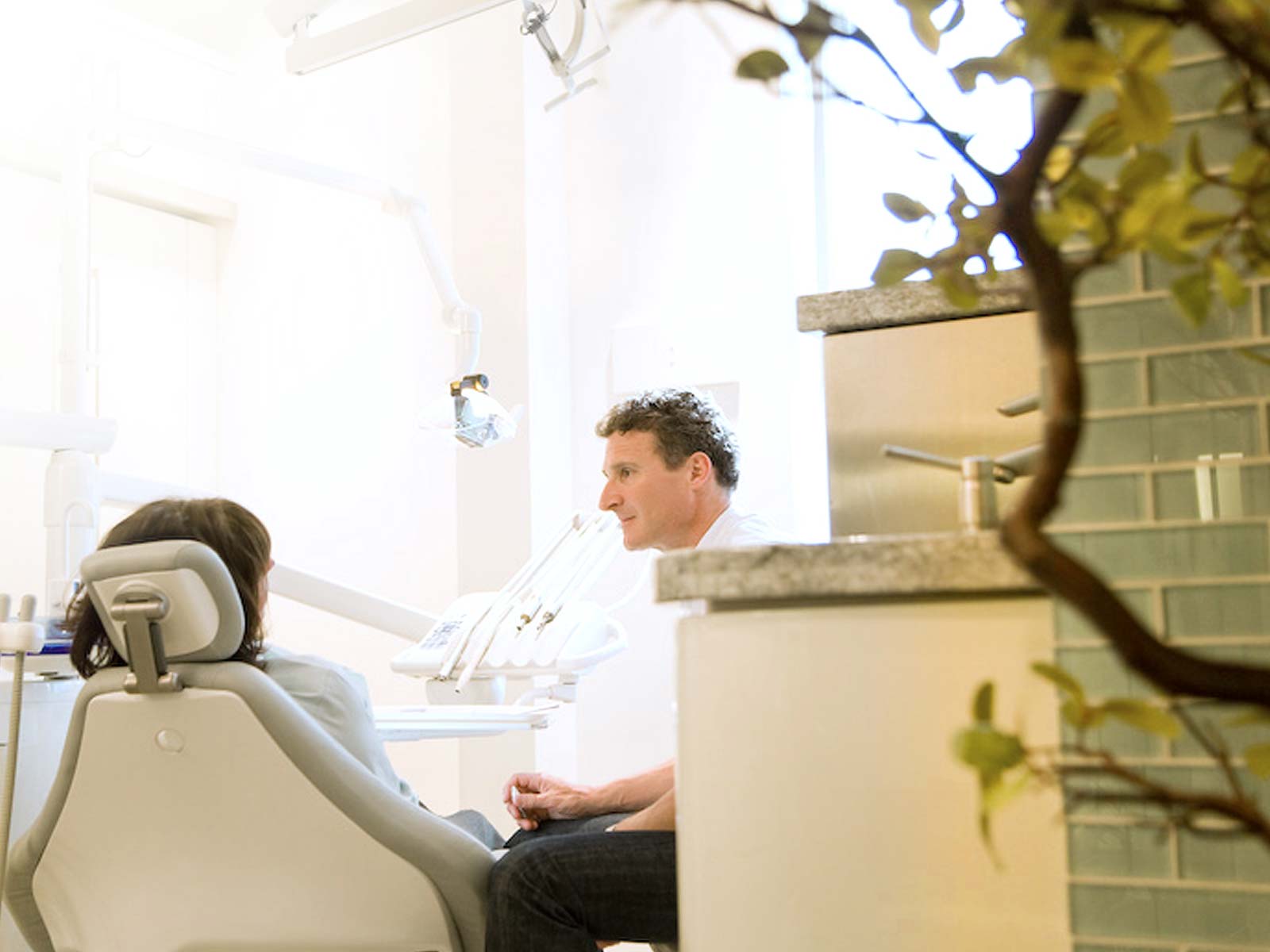
In the broadest sense, the term gum disease–or periodontal disease–describes bacterial growth and production of factors that gradually destroy the tissue surrounding and supporting the teeth. Periodontal means “around the tooth”.
Gum disease begins with bacteria in the form of plaque, which is always forming on your teeth, without you even knowing it. When it accumulates to excessive levels, it can harden into a substance called tartar (calculus) in as little as 24 hours. Tartar is so tightly bound to teeth that it can be removed only during a professional cleaning. Tartar irritates the gums much like a sliver in your finger would irriate the surrounding tissue. The inflammation in the gums eventually destroys the bone holding your teeth in, the gums pull away from the tooth and causes pockets which can become infected. The teeth may then become loose and have to be removed. Early signs of gingivitis are tender gums that bleed when you brush and floss. If it progresses to periodontal disease you may then begin to notice some or all of the following: loose teeth, increased spaces between teeth, teeth that appear longer than they used to, bad breath that won’t go away, sore gums that bleed when you brush and floss, and swollen gums.
Gingivitis and periodontitis are the two main stages of gum disease. Each stage is characterized by what a dentist sees and feels in your mouth, and by what’s happening under your gumline. Although gingivitis usually precedes periodontitis, it’s important to know that not all gingivitis progresses to periodontitis. There are two main types of periodontal disease, chronic periodontal disease or aggressive periodontal disease which is often found in conjuction with some of the other risk factors noted below.
RISK FACTORS:(*)Gum disease is the major cause of about 70 percent of adult tooth loss, affecting three out of four persons at some point in their life. Factors that may increase your risk to develop periodontitis are: certain medications, smoking or a history smoking, diabetics, people who have a family history of gum disease, stress, other illnesses such as cancer, rheumatoid arthritis or other autoimmune disorders, and GERD.
TREATMENT
Non-surgical treatment: The most conservative option is scaling and root planing which some people refer to as “deep cleaning” to stop the disease process. In conjunction with this initial cleaning we sometimes will use subgingival (below the gum) antibiotics which release slowly over time, or systemic (oral) antibiotics. For most people we use local anaesthetic to do this to keep you as comfortable as possible. Afterwards, regular cleanings and daily brushing and flossing are essential to control and manage periodontal disease. Cleanings every 3-4 months are essential.
Surgical treatments: Areas that do not resond to non-surgical treatment we then consider surgical intervention such as: pocket reduction, bone regeneration, and soft tissue grafting.
RESPONSE TO TREATMENT
Generally this treatment, including a regular cleanings is effective in reducing tooth loss. Immediately following the deep cleaning you may experience tenderness in the gums for 1-2 days. Some patients also find their teeth are more sensitive to cold. This is typically managed by using a toothpaste for sensitivity and sometimes using a more concentrated application of fluoride on to the roots. Sometimes the teeth feel different when biting together and this may require a bite adjustment. Loose teeth may require splinting together to reduce the mobility and stabilize them.
For more information from the canadian and american academies of periodontics click on the links;
